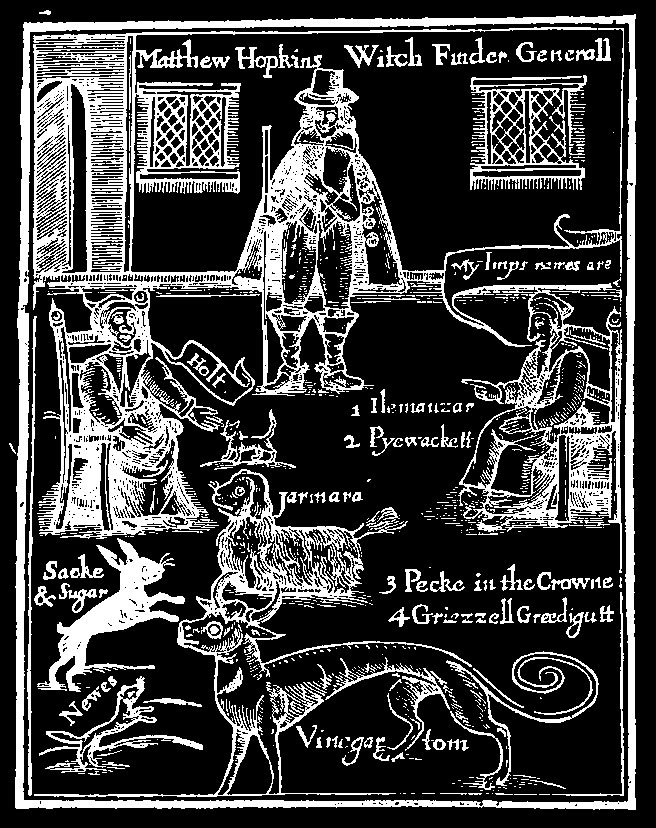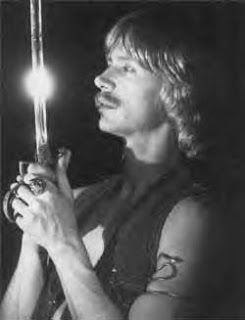“Wicca (English: /ˈwɪkə/) is a modern Pagan religion. Scholars of religion categorise it as both a new religious movement and as part of the occultist stream of Western esotericism. It was developed in England during the first half of the 20th century and was introduced to the public in 1954 by Gerald Gardner, a retired British civil servant. Wicca draws upon a diverse set of ancient pagan and 20th-century hermetic motifs for its theological structure and ritual practices.”
—Wikipedia

Wicca is now a ubiquitous term that has the feel of something that has been around for a significant period of historic time. It has become, especially in the USA, an almost generic term nearly synonymous with ‘witch’ within popular culture at large. It has the feel in many instances as denoting a New Age eclecticism of neo-pagan practice. In fact, the term entered modern English relatively recently in the second half of the last century. It has its roots in the Old English word ƿiċċa denoting an Anglo-Saxon sorcerer, from which we get our modern English word ‘witch’.
Gerald B. Gardner is generally considered the founder of modern Wicca. It is interesting to note that the word occurs only rarely in his own writing. He referred to his practice as the ‘Craft of the Wise, ‘the Witch Cult’ or just simply ‘witchcraft’. He did use ‘the Wica’ on occasion to describe the growing witch community. The use of the term grew in the early to mid 1960s and now with the more common spelling of two c’s. During the early years of its adoption, the term was used exclusively to refer to those within Traditional British Witchcraft (e.g. downline from Gardner). By the late seventies and eighties, through the influence of a new generation of writers such as Scott Cunningham and Silver RavenWolf the term gained a more encompassing and universal meaning.
See also my essay “Who Were the British?”
The Father of Witchcraft, Gardner came into contact with a coven of traditional witches secretly operating in the New Forest, likely through his association with a Rosicrucian fellowship operating in the area. He was initiated into the coven in 1939. He believed this group to be a surviving pre-Christian witchcraft tradition.
In the late 1940s, Gardner founded his own coven in Hertfordshire, known now as the Bricket Wood coven, which was centered at the Fiveacres Country Club, a nudist or “naturist” club that Gardner owned. Many important figures in the Craft were associated with this group including ‘Dafo’ Edith Woodford-Grimes, Doreen Valiente, Lois Bourne, Gardner biographer Jack Bracelin, among others.
In 1949, he published an account of these witchcraft practices disguised as fiction in a novel High Magic’s Aid under the penname Scire. He followed this with two non-fiction books Witchcraft Today (1954) and The Meaning of Witchcraft (1959). Through these, he became the first public witch and a de facto spokesperson for the Craft.
He initiated Patricia Crowther, who then brought her husband in. They founded the Sheffield Cover in 1961. Eventually those tracing their lineage back to Gardner became termed ‘Gardnerians’ and the tradition ‘Gardnerian’—a term first coined as a derogatory in the contemporary pagan press.
In 1963, Raymond Buckland traveled to Scotland to meet Gardner. He was initiated by Gardner’s then high priestess Monique Wilson (Lady Olwen). Upon his return to Long Island, Buckland initiated his wife Rosemary and, the following year, they formed the Long Island Coven—the first coven downline from Gardner to be established in North America. Buckland would later go on to found the Seax-Wica ‘tradition’ of Anglo-Saxon witchcraft.
The Old Kentucky Line
The Bucklands’ initiator Lady Olwen implemented a rule that only a 3° High Priestess could cast a circle. This exists in no other branch of Gardnerian practice. Since the Bucklands were her downline, they inherited this rule. When Raymond split with his wife Rosemary, she retained control of the Long Island coven—and it became known as the ‘Long Island Line’ of Gardnerian. Two initiates Theo and Thane had received their first and second degree initiations in a circle cast by Rosemary. When it came time for their third degree elevation, the Bucklands had divorced and Raymond cast the circle. This meant that the rest of the US Gardnerians viewed those downline from the pair as illegitimate given Olwen’s rule and that the vast majority of American Gardnerians descended from her. This line became known as the Kentucky, now Old Kentucky, Line. I mention this as a little historical digression as this is the line from which Eddie received his Gardnerian initiation. The Old Kentucky Line is pretty much extinct these days as its initiates have been absorbed into the Long Island Line proper.
Alexandrian

Alex Sanders was another figure hanging around in the early 1960s. He had contact with the Crowthers seeking initiation to the Sheffield Coven and Gardner. Sanders claimed, rather dubiously, to have been initiated into the Craft by his Welsh grandmother, and, alternatively, a Scottish witch who called herself Medea. He was likely initiated in Gardner’s lineage by Pat Kopinski, an initiate from the Crowthers’ coven. Either through this contact or elsewhere, Sanders gained access to the Gardnerian Book of Shadows and ran a coven based in Manchester. In the early to mid 1960s, Sanders initiated hundreds of people into the Craft.
There was much controversy ostensibly surrounding Sander’s lineage and his downlines were held suspect by those legitimately downline from Gardner and his high priestesses. Alex Sanders was also bisexual and he ultimately split with Maxine over his relationship with a male witch. There is no doubt that homophobia played a large role in the Gardnerians’ animosity toward him.
The lineage tracing itself back to Sanders is termed ‘Alexandrian’. Much of the animosity that existed between these two has lessoned over the years, and the lines are often collectively referred to as ‘Alex/Gard’.
The full family of cousin traditions that have their roots in the original work of Gardner are referred to collectively as British Traditional Witchcraft (BTW), of which the Minoan Brotherhood is a part. Each of these traditions are Wiccan and their practitioners can trace a direct initiatory lineage back to Gardner.
Many strains of witchcraft exist in the modern West from lineage-bound to eclectic solo practitioners. British Traditional Witchcraft (BTW) consists of a family of lineages that stem from the founder Gerald B. Gardner. These include Gardnerian, Alexandrian, NY Wica, and the Minoan Brotherhood/Sisterhood.
The Brotherhood’s founder, Eddie Buczynski was initiated into New England Covens of Traditionalist Witches (Welsh Wica) and Gardnerian Wicca. In 1972, Eddie founded his first witchcraft lineage NY Welsh Tradition. In 1973, he received Gardnerian initiation from a priestess within the Kentucky (or Buckland) line. That year, he established his Traditional Initiatory Wicca, known as NY Wica. Both these traditions also continue to this day.
In 1977, Eddie officially launched his third witchcraft tradition, the Minoan Brotherhood & Sisterhood. With the establishment of the Knossos Grove, Eddie gave the world a queer, sex-positive, initiatory mystery tradition for men who love men. In doing so, he drew on the British Traditional Craft variants he had been previously initiated into. While resting on a new mythical framework, the Brotherhood owes much to its forebears.
Following on the last email’s view into the history of Wicca, I thought it good timing to follow with a look at the lineages within which Eddie Buczynski (Lord Gwyddion) was initiated and the distinct traditions he left behind at his disappearance. Lady Rhea as referred to all Lord Gwyddion’s sons and duaghters and “Edwardians”.
He met Lady Gwen Thompson leader of the New England Covens of Traditionalist Witches (NECTW) and High Priestess of a Welsh coven in Connecticut. Lady Gwen initiated Eddie and he eventually became High Priest of her coven. Eddie gave dates for his initiations in the late 1960s with his taking the role of High Priest in 1970. There are inconsistencies with his stated dates and some controversy as to whether he received the third degree from Thompson. The two eventually split over Eddie’s denials of Thompson’s sexual advances.
In 1971 Eddie sought out Leo Louis Martello an author of metaphysical books who had begun to be publicly recognized as a witch beginning in 1969. Martello practiced a version of Italian inspired witchcraft he termed the Strega Tradition. He put the young Eddie into contact with other witches and occultists including Herman Slater. The two soon became lovers, moved in together in Brooklyn Heights, and in June 1972 opened the Warlock Shop.
Eddie reached out to two covens within the Kentucky Line of Gardnerian Witchcraft, see historical note in last email. He was turned away by one because of the distance between New York and Louisville; the other denied him because he was homosexual.
EDDIE’s LINEAGES

Welsh Traditionalist – 1972
Following his expulsion from Thompson’s New Haven coven, around 1972, Eddie established the first of his three witch traditions: alternatively called New York Welsh Traditionalist Gwyddonaid (N.Y.W.T.G.), New York Welsh, Brooklyn Welsh, and simply the Welsh Tradition. The above illustration is an original drawing from Eddie’s Welsh materials.
NY Wica – 1974
Eventually, Eddie was initiated into the Old Kentucky Line by HPS Lady Hela. He quickly became disillusioned by the heterosexism, and all too often homophobia, of Gardnerian practice at that time. This led him to found his own progressive and egalitarian Coven of Witches combining what he had learned from both the Welsh and Gardnerian traditions in late 1973 early 1974. This lineage is known today as NY Wica.
Minoan Brotherhood – 1977
The Minoan Brotherhood was officially founded on January 1, 1977 with the establishment of the Knossos Grove coven in New York City. Early initiates included Eddie’s then boyfriend Bennie Geraci, their friend Joseph Cupolo. They soon welcomed in Kim Schuller, who was soon followed by Bruce-Michael Gelbert. Not long after, Cupolo moved to New Orleans, where he founded a second coven, known as Phaistos Grove.
Further Reading:
Philip Hasselton has written a fascinating two-volume biography of Gardner, Witchfather I & II, and In Search of the New Forest Coven.
